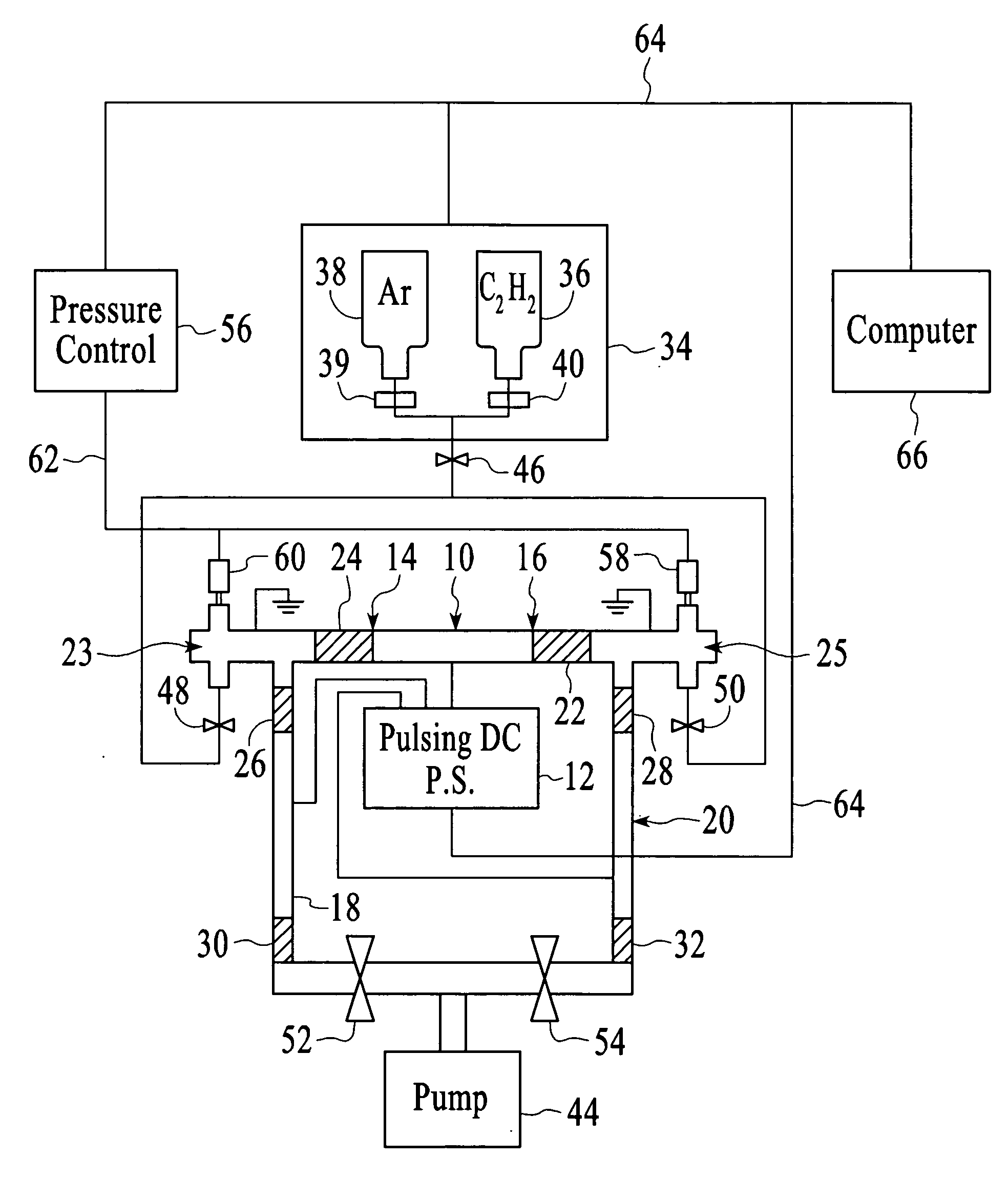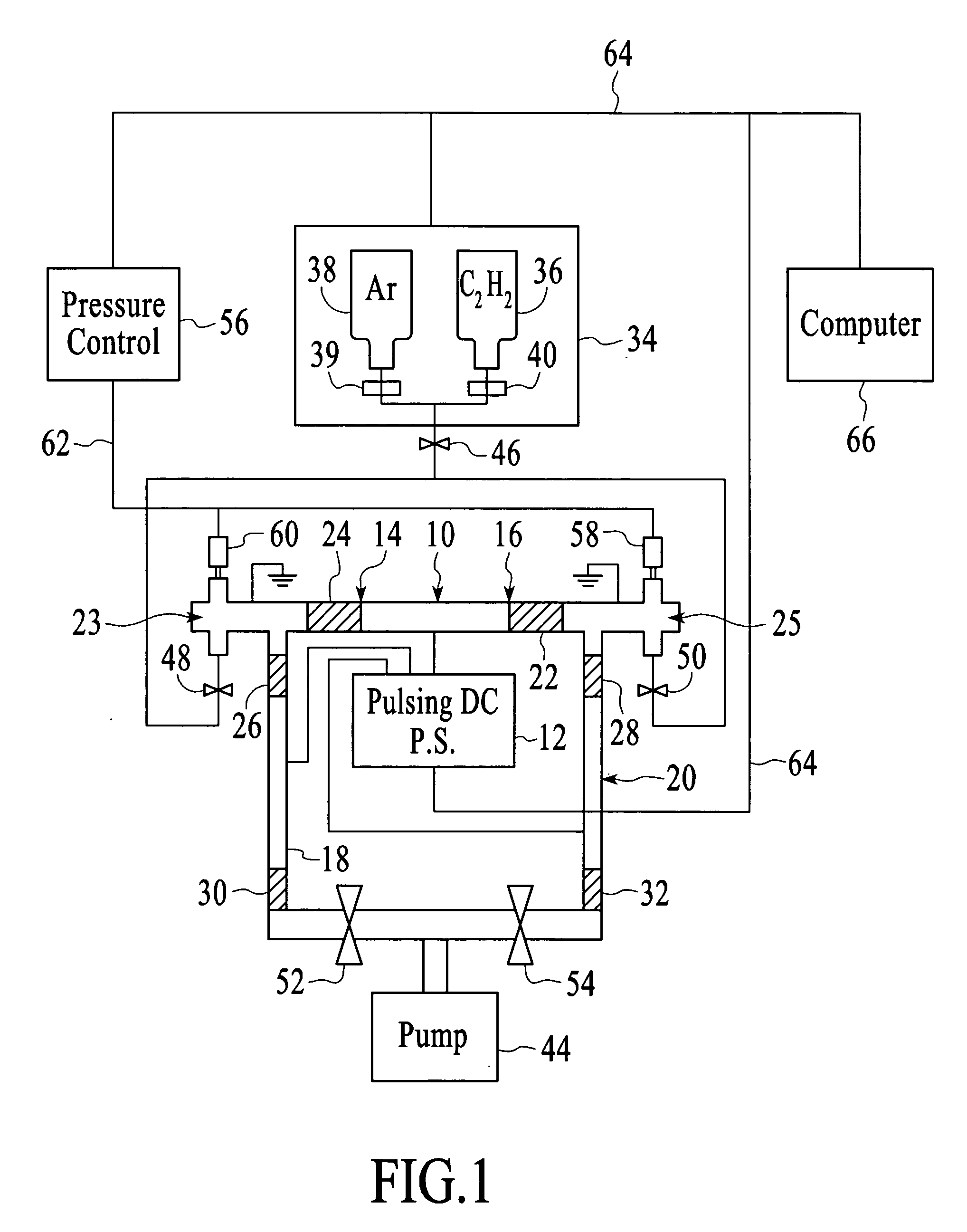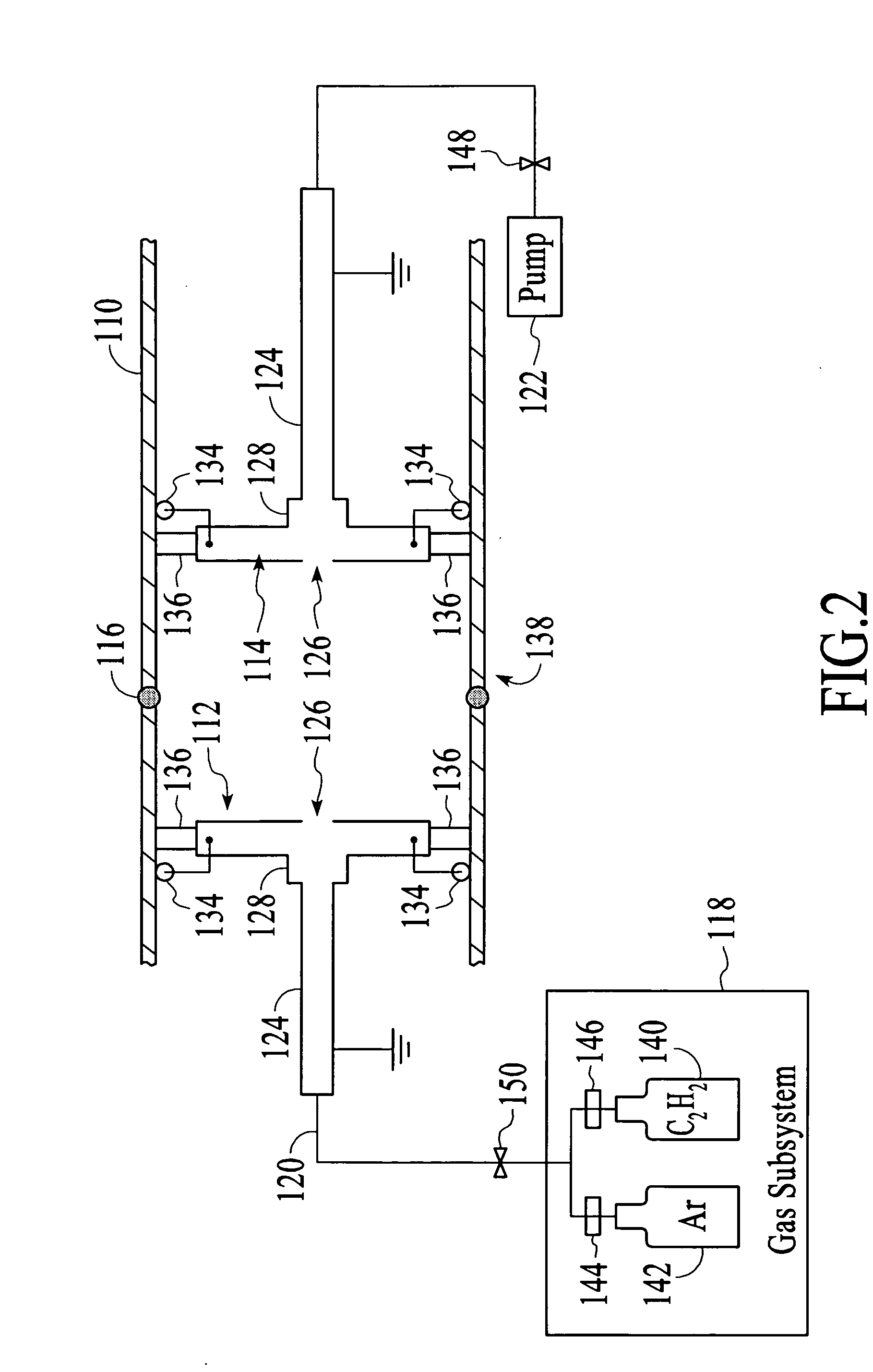Plasma enhanced bonding for improving adhesion and corrosion resistance of deposited films
a technology of enhanced bonding and deposited films, which is applied in the field of chemical vapor deposition systems, can solve the problems of severe wear and erosion environment, major corrosion of industrial piping and other components such as valves and pumps, and the oil industry, in particular, faces severe corrosive environments, etc., and achieves the effect of reducing the probability of chemical undercutting, and improving the chemical resistance of dlc coatings
- Summary
- Abstract
- Description
- Claims
- Application Information
AI Technical Summary
Benefits of technology
Problems solved by technology
Method used
Image
Examples
example 1
[0060]For the case of coating the interior of a 1.75 inch (44.45 millimeter) diameter by 12 inch (304.8 millimeters) long carbon steel (1222) pipe, using a DC pulse power supply to generate the plasma as described above. It should be noted that the power settings below are DC values and the per pulse power will be much higher, resulting in high ion bombardment as described earlier.[0061]A) The pipe is pumped to the low millitorr pressure range.[0062]B) The surface is activated and cleaned by introducing argon gas, and generating a plasma by applying a DC pulsed bias voltage.[0063]C) A nitrogen plasma is used to heat the part to the desired temperature.[0064]D) Adhesion PEB steps:[0065]1. Tetramethylgermanium precursor is introduced with argon at a pressure of 150 mTorr and a power of 180 watts with a 5% total duty cycle for 5 seconds.[0066]2. Argon is introduced for 4 minutes at a pressure of 65 mTorr with a power of 240 watts with a duty cycle of 15%.[0067]3. Steps A and B are repe...
example 2
[0078]Deposition of a well bonded DLC layer to the interior of a 1.5 inch (38.1 millimeters) diameter by 6 inch (152.4 millimeters) long silicon carbide pipe. Good adhesion to a silicon carbide substrate is difficult to achieve, due to the strongly bonded ceramic structure of the substrate and thus the lack of dangling bonds available for bonding with the adhesion layer at the interface. An additional problem is the more insulating nature of the ceramic structure which resulted in high voltages, and severe arcing, when a conventional SiH4 deposited adhesion layer was used. In contrast with the PEB adhesion process the plasma ran at ˜20% lower voltage and 30% higher current with no arcing. Again, a DC pulse power source is used to generate the plasma.[0079]A) The pipe is pumped to the low millitorr pressure range.[0080]B) A nitrogen plasma is used to prepare the surface and to heat the part to the desired temperature.[0081]C) Adhesion PEB steps:[0082]2% SiH4 balance argon; is introdu...
PUM
| Property | Measurement | Unit |
|---|---|---|
| thickness | aaaaa | aaaaa |
| thickness | aaaaa | aaaaa |
| thickness | aaaaa | aaaaa |
Abstract
Description
Claims
Application Information
 Login to View More
Login to View More - R&D
- Intellectual Property
- Life Sciences
- Materials
- Tech Scout
- Unparalleled Data Quality
- Higher Quality Content
- 60% Fewer Hallucinations
Browse by: Latest US Patents, China's latest patents, Technical Efficacy Thesaurus, Application Domain, Technology Topic, Popular Technical Reports.
© 2025 PatSnap. All rights reserved.Legal|Privacy policy|Modern Slavery Act Transparency Statement|Sitemap|About US| Contact US: help@patsnap.com



